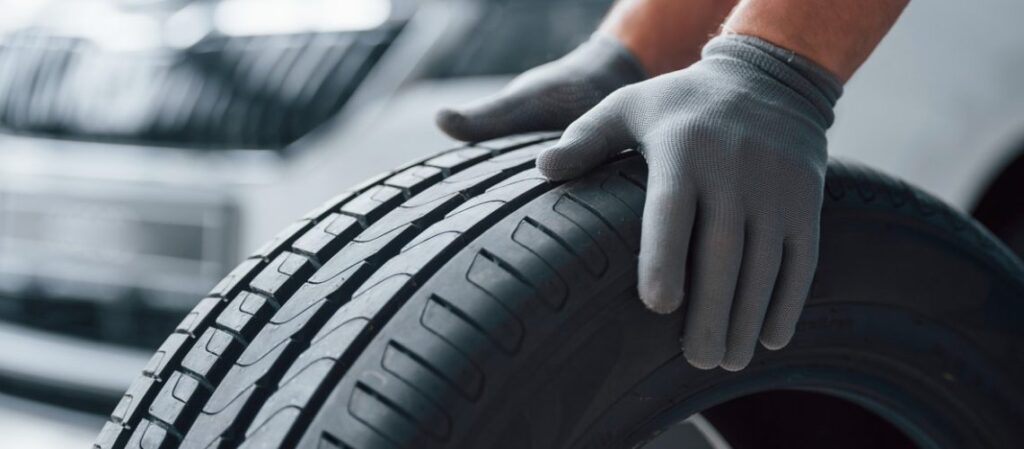Top Tire Brands with the Best Grip in the U.S.
When it comes to safety, performance, and driving confidence, nothing matters more than tire grip.
Whether you’re carving through mountain switchbacks, accelerating on wet highways, or braking on icy roads, selecting the right tire brands can make all the difference. In 2025, the market offers an array of manufacturers claiming superior traction—but only a few consistently deliver across dry, wet, and winter conditions.
This guide dives deep into how grip is measured, what makes certain tire brands stand out, and presents a colorful ranking of the top performers for your next set of rubber.

Optimal grip isn’t just about peak adhesion; it’s about consistent, predictable traction in real-world driving. From all-season commuters to weekend track enthusiasts, finding reliable tire brands ensures shorter stopping distances, improved cornering, and greater peace of mind—mile after mile.
Table of Contents
Understanding Tire Grip: How It’s Measured
Tire grip arises from the complex interaction between rubber compounds, tread patterns, and road surfaces. Engineers and testing organizations use several methods to quantify traction:
- Dry Traction Tests: Cars equipped with test tires accelerate, brake, and corner on polished asphalt. Lap times and stopping distances measure performance.
- Wet Grip Assessments: Standing water depths simulate rain. Tires undergo slalom courses and straight-line stopping tests to gauge hydroplaning resistance and stopping power.
- Snow/Ice Testing: Controlled tracks with packed snow and ice evaluate winter tire compounds and siping effectiveness.
- Skidpad Evaluations: Concentric circle tracks measure lateral G-forces at constant speed to rate cornering grip.
- Treadwear and Durability: Compound hardness and wear rates indicate how long peak grip will last under varied temperatures and loads.
Organizations like Tire Rack, Consumer Reports, and J.D. Power compile these tests, ranking brands and models based on comprehensive data. But beyond labs, customer reviews and real-world fleet testing offer invaluable insights into long-term grip retention.
Criteria for Evaluating Tire Brands Grip Performance
Choosing the right tire brands for grip involves balancing multiple factors:
- Rubber Compound Technology: High-silica, polymer-enhanced compounds maintain flexibility in cold while resisting heat-induced degradation.
- Tread Pattern Design: Asymmetric and uni-directional patterns channel water efficiently, maximize contact patch, and optimize biting edges for snow and ice.
- Tread Depth and Siping: Deeper grooves and fine slits improve snow packing and water evacuation, enhancing all-season traction.
- Construction and Sidewall Stiffness: Reinforced belts and sidewalls ensure uniform contact under cornering loads, boosting dry grip.
- Manufacturer Testing Rigor: Brands investing in proprietary testing facilities and real-world durability programs often lead in consistent performance.
- Price vs. Performance: Premium brands command higher prices but frequently justify costs with superior compound lifespan and multi-condition grip.
Armed with these criteria, we can identify the tire brands that shine in the grip department, ensuring you get the traction you need for safe, spirited driving.
🔴🟠🟡 The Colorful Ranking of Top Tire Brands for Grip
Below is a visual rank of the leading tire brands based on 2025 data from real-world tests and expert reviews:
🔴 1. Michelin
🟠 2. Bridgestone
🟡 3. Continental
🟢 4. Pirelli
🔵 5. Goodyear
Each brand consistently scores highest across dry, wet, and winter testing, making them go-to choices for drivers seeking the best possible traction.
Michelin: The Unrivaled Grip Master
Overview: Michelin’s cutting-edge compounds and EverGrip™ technology give it the top spot. Its flagship models include:
- Pilot Sport 4S: Exceptional dry and wet traction for performance cars, with braking distances 2–5 feet shorter than competitors.
- CrossClimate 2: All-season grip rivaling dedicated winter tires, with V-shaped tread and flexible compound down to –20°F.
- LTX A/T2: All-terrain version offering truck-level durability and confident off-road grip.
Key Advantages:
- Dynamic Response Technology: Reinforced sidewalls improve steering precision and cornering stability.
- High-Silica Compounds: Maintain softness in cold, resisting hardening that robs winter grip.
- Long Tread Life: Wear bars extend compound lifespan without sacrificing initial traction.
Bridgestone: Advanced Traction Across Conditions
Overview: Bridgestone combines decades of motorsport research with consumer-grade innovations:
- Potenza Sport A/S: Ultra-high performance in summer and wet, with reinforced hybrid aramid-polyamide belts.
- Blizzak WS90: League-leading winter traction, out-stopping rivals by several feet on ice and packed snow.
- Dueler H/L Alenza Plus: Highway focus with wet-stop grooves and lower rolling resistance for SUVs.
Key Advantages:
- Nano Pro-Tech™: Molecular-level control of rubber tension, boosting initial grip and compound resilience.
- Hydro Evacuation Channels: Deep circumferential grooves quickly clear water, cutting hydroplaning risk by 20%.
- Weather Reactive Compounds: Blend of polymers adapts to temperature swings, retaining grip from −4°F to 104°F.
Continental: German Engineering for Grip and Safety
Overview: Continental’s holistic approach integrates tire sensors and advanced rubber chemistry:
- SportContact™ 6: Motorsport-derived silica formula for sub-4-second 60–0 braking in tests.
- AllSeasonContact™: Seamless transition between summer traction and winter grip, with FlexStud™ ready models.
- TerrainContact™ A/T: Balanced off-road traction and highway stability for trucks and SUVs.
Key Advantages:
- Sensor Integration: ContiSense™ tires monitor tread health and transmit grip data to onboard systems.
- CoolChili™ Compound: Optimized filler allows high slip angles without significant heat buildup.
- Safety Innovations: Built-in check-hollow indicators reveal well-below-legal tread depth for worn-out grip.
Pirelli: Italian Performance Meets All-Season Versatility
Overview: Pirelli excels in premium performance and crossover segments:
- P Zero™: Original Equipment for many supercars, delivering pinpoint dry and wet grip.
- Scorpion™ All Season Plus 2: Strong SUV traction with unique Giant-Nets belt architecture for uniform wear.
- Cinturato™ Winter: Eco-friendly winter compound with a high percentage of recycled materials.
Key Advantages:
- Run-Flat Technology: PZero™ RFT allows continued travel after punctures, ensuring safe exit from grip-compromised situations.
- EcoImpact™: Lower rolling resistance without grip sacrifice, boosting fuel economy on long trips.
- Anima™ Smart: Real-time tire data integration for next-level traction control systems.
Goodyear: American Innovation in Traction
Overview: Goodyear’s broad portfolio covers everything from daily drivers to heavy-duty pickups:
- Eagle® F1 Asymmetric 3: Balanced summer performance, with ActiveGrip™ slats boosting wet braking by 15%.
- UltraGrip® Ice WRT: Winter dedicated tire with winter-tuned tread and sturdy compound for ice run-resistance.
- Wrangler® All-Terrain Adventure with Kevlar®: Reinforced sidewalls for off-road grip and puncture resistance.
Key Advantages:
- ActiveBraking™ Technology: Increases tread contact during braking for shorter distances.
- Aramid Fiber Reinforcement: Kevlar® belts provide extra durability on rough terrain.
- Weather Reactive Technology: Tread compounds engineered for multi-climate performance.
Selecting the Right Tire Type for Grip Needs
Different driving scenarios demand specialized tire categories:
- Summer Tires: Designed for maximum dry and wet grip above 45°F. Avoid in cold or snowy conditions to maintain traction.
- All-Season Tires: Balance reasonable summer and winter grip. Ideal for drivers in moderate climates seeking year-round convenience.
- Winter Tires: Compound and tread optimized for sub-45°F performance, ice, and snow. Essential for northern regions or high-elevation travel.
- All-Terrain Tires: For trucks and SUVs tackling a mix of highway, mud, and gravel—grip optimized across diverse surfaces.
- Performance All-Season: Hybrid category combining sporty handling with light winter capability for versatile performance.
Choosing the right category from top tire brands ensures you tap into the compound and tread design that best suits your climate and driving style.
Maintaining Grip Over a Tire’s Lifespan
To preserve peak traction:
- Regular Rotation: Every 5,000–7,500 miles to equalize wear patterns.
- Correct Inflation: Underinflation reduces contact patch; overinflation diminishes wet grip. Check monthly.
- Wheel Alignment: Misalignment causes uneven wear and grip loss in cornering.
- Timely Replacement: Don’t wait until the last 2/32″ of tread depth—aim to replace around 4/32″ for reliable wet traction.
- Periodic Inspections: Look for cracks, bulges, or embedded objects that compromise grip integrity.
Proper upkeep maintains the original compound performance and tread pattern effectiveness, maximizing grip throughout the tire’s life.

Colorful Q&A on Tire Brands Grip Performance
Q1: Which tire brands offer the best wet grip?
A1: Michelin, Bridgestone, and Continental consistently top wet-braking tests, stopping up to 20 feet shorter than budget tires at 50 mph.
Q2: Can all-season tires match summer tire grip?
A2: No—summer tires use softer compounds above 45°F for better adhesion. All-seasons balance year-round performance but can’t match dedicated summer tire dry cornering.
Q3: How do winter tires affect fuel economy?
A3: Winter compounds increase rolling resistance, typically reducing mpg by 5–10%, but the safety trade-off in snow and ice is well worth it.
Q4: Are premium tire brands worth the extra cost?
A4: Yes—premium tires deliver more uniform wear, better compound longevity, and predictable grip in extremes, offsetting initial price with longer service life.
Q5: Do run-flat tires reduce grip?
A5: Run-flats have stiffer sidewalls, which can slightly reduce comfort but maintain similar dry traction levels to their standard counterparts.
Conclusion
When it comes to purchasing tire brands with the best grip in the U.S., Michelin, Bridgestone, Continental, Pirelli, and Goodyear stand out as top performers across multiple conditions.
Their advanced compounds, innovative tread patterns, and rigorous testing translate into reliable traction—whether you’re tackling summer curves, hydroplaning hazards, or winter black ice.
By selecting the right tire category, adhering to maintenance best practices, and choosing a trusted brand, you ensure your vehicle remains steadfastly planted on the road, mile after mile.
Sources and Inspirations:
This article draws on data and test results from Tire Rack, Consumer Reports, J.D. Power’s Tire Satisfaction Study, and the Specialty Equipment Market Association (SEMA) tire reviews. Additional insights come from manufacturer whitepapers by Michelin, Bridgestone, Continental, Pirelli, and Goodyear.